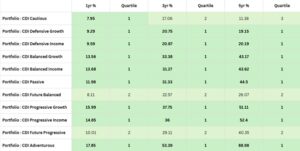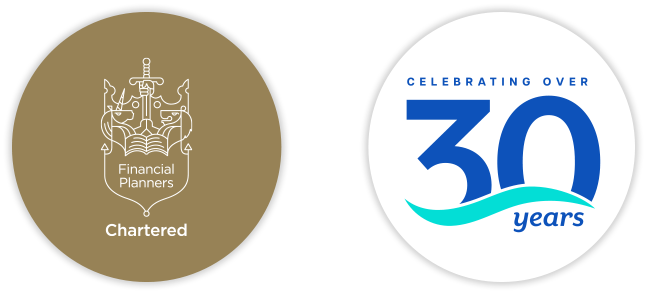
Due to a combination of rising property and asset values, static bands on which assets can pass without being subject to IHT and government policy decisions, more estates than ever will become liable to IHT in the future. Upcoming changes to the IHT treatment of unused pension funds will only exacerbate the position for many estates, with some individuals – who need not be concerned about IHT at present – finding their estate would be liable to IHT once their pension value is added to the value of their estate from April 2027.
As a result, planning tools designed to mitigate a potential IHT liability are becoming ever more popular. Establishing a Trust during your lifetime is one of a range of options which can help pass assets on to the next generation in a tax-efficient manner, and protect family wealth; however, Trusts can be difficult to understand, due to the specific rules, tax treatment and the different types of Trust that can be created. In the first of a recurring series, we will cover several types of Trust that can be effective in different planning scenarios. In this issue, we focus on Loan Trusts.
Keeping control
We often meet clients who understand the benefits of settling funds into Trust for the next generation; however, to be effective for IHT purposes, the settlor (i.e. the person creating the Trust) usually needs to give up access to the capital. This may not be practical, as the settlor may need access to the funds, to provide themselves with regular payments in the form of an income.
Instead of gifting funds into Trust, an alternative is for the settlor to lend funds to the Trustees. By lending – rather than gifting – the capital, the settlor has access to the original loan on demand. The outstanding loan remains inside the settlor’s estate for IHT purposes; however, investment growth remains within the Trust and therefore outside of the settlor’s estate. Furthermore, loan repayments to the settlor, to cover expenditure, will naturally reduce the value of the estate over time.
The settlor usually also acts as one of the Trustees, which allows them to retain control over investment decisions, and in the case of a Discretionary Trust, when money is paid to beneficiaries.
Options on establishment
The easiest way to access a Loan Trust is through an insurance provider, who produce the necessary Loan Trust Deed. Upon creation of the Trust, the settlor lends money to the Trustees, who then invest the money into an Investment Bond. This particular investment vehicle is appropriate as it allows regular withdrawals of up to 5% of the original investment each year without creating a Chargeable Event for tax purposes. Using an Investment Bond offered by leading investment platforms, the Trustees can invest money in a wide range of investment funds available across the open marketplace and access discretionary management of the Trust portfolio, if preferred.
In most cases, the Trust Deed is prepared on a Discretionary basis where a pool of beneficiaries (usually direct family members) can benefit, although no single beneficiary has a right to the capital.
Loan Trusts in action
Meet Richard and Amy, who hold assets valued above £1m. As a result, their estate is potentially liable to IHT. They wish to gift funds to their children and grandchildren, to help pay down their children’s outstanding mortgage balances at the right time and help their grandchildren through further education. Most of their wealth is, however, concentrated in their primary home, and whilst the couple hold investments valued at £200,000, they cannot afford to give substantial sums away absolutely, as they rely on the income from their investments to supplement their pension income.
Richard and Amy loan £150,000 of their investments to a new Discretionary Trust, keeping £50,000 immediately available to them. They arrange regular loan repayments of 4% per annum from the Trust, which matches the income they currently receive on their investments, so that their monthly expenditure is covered.
Roll forward three years, and the value of the Trust investments has increased to £170,000. The £20,000 growth achieved over the initial investment is inside the Trust, and therefore immediately outside of Richard and Amy’s estate. Furthermore, the £18,000 they have received in loan repayments over the three years has reduced the outstanding loan, which is included in their estate, to £132,000.
Changing circumstances
The Loan Trust arrangement is very flexible and can adapt to changes in circumstances. For example, should the settlor no longer need access to the outstanding loan, they can waive their right to income, so that the Trust assets are held for the beneficiaries. The act of waiving the loan is treated as a gift for IHT purposes, and therefore careful consideration is needed before following this course of action; however, waiving part of the loan each year, potentially limiting gifts to the annual exemption, could reduce the value of the potential taxable estate over time.
The need for sound planning advice
Loan Trusts may well be complex arrangements; however, they can be an effective way of reducing a potential IHT liability over time and retaining access to funds if needed. They may also be useful for those who have already made Chargeable Lifetime Transfers by other gifts into Trust, as the loan made to establish the Trust investment is not treated as a chargeable transfer.
The downside to a Loan Trust is that the outstanding loan remains inside the settlor’s estate, and other Trust arrangements could provide a more efficient transfer of wealth. Our experienced advisors can provide independent advice on a range of IHT mitigation tools, including assets that qualify for Business Relief, insurance solutions, and Trust planning. If Trusts are an appropriate option, we can advise on the right Trust to meet your needs and objectives. If you have concerns about IHT and ways to reduce the burden of tax on your estate, please speak to one of our independent advisers.








